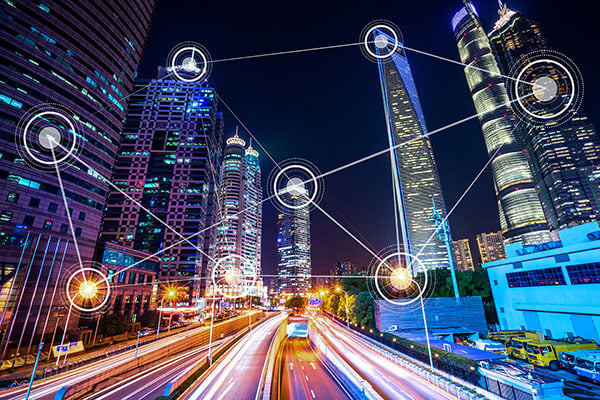
Building Tomorrow’s Urban Landscape: Smart Cities
Defining Smart Cities
Smart Cities represent a visionary concept where technology converges with urban life to enhance efficiency, sustainability, and the overall quality of living. In this article, we explore the fundamental aspects of smart cities, from their definition to the technologies driving their development, and the potential impact on urban environments.
The Core Components of Smart Cities
At the heart of smart cities are interconnected systems and intelligent infrastructure. These encompass a range of technologies, including the Internet of Things (IoT), data analytics, artificial intelligence, and sensor networks. The integration of these components enables cities to collect and analyze data in real-time, paving the way for informed decision-making and improved city management.
Enhancing Urban Efficiency and Sustainability
Smart cities leverage technology to optimize resource use and enhance efficiency. Intelligent transportation systems reduce traffic congestion, and smart energy grids optimize electricity consumption. Waste management systems use sensors to track and manage waste levels, contributing to a more sustainable and eco-friendly urban environment. The efficiency gains achieved through technology positively impact both residents and the environment.
Intelligent Infrastructure: The Backbone of Smart Cities
Smart cities invest in intelligent infrastructure to create a seamless urban experience. From smart buildings that adjust energy usage based on occupancy to connected streetlights that brighten or dim based on real-time conditions, the infrastructure becomes adaptive and responsive to the needs of the city and its inhabitants. This interconnectedness enhances the overall functionality and livability of urban spaces.
Data-Driven Decision Making
The hallmark of smart cities is their reliance on data to make informed decisions. Sensors and IoT devices collect vast amounts of data on everything from air quality and traffic patterns to energy consumption. Analyzing this data provides valuable insights that city officials can use to implement policies, allocate resources efficiently, and respond proactively to various urban challenges.
The Role of Connectivity in Smart Cities
Connectivity is a linchpin in the smart city framework. High-speed, reliable internet connectivity forms the backbone of smart initiatives, facilitating seamless communication between devices and systems. From smart homes and offices to connected public spaces, a robust network infrastructure is essential to realizing the full potential of smart city technologies.
Improving Quality of Life for Residents
Ultimately, the aim of smart cities is to enhance the quality of life for residents. Smart initiatives extend to healthcare, education, and public safety. Remote healthcare monitoring, smart classrooms, and predictive policing are just a few examples of how technology improves essential services, making them more accessible and responsive to the needs of the community.
Challenges on the Path to Smart Cities
While the vision of smart cities is promising, challenges abound. Privacy concerns, cybersecurity risks, and the equitable distribution of smart technologies require careful consideration. City planners and policymakers must address these challenges to ensure that the benefits of smart cities are accessible to all residents and that the implementation of technology is ethical and secure.
The Global Momentum Towards Smart Cities
Cities worldwide are embracing the smart city concept, with initiatives ranging from smart grids and intelligent transportation systems to sustainable urban planning. Collaborative efforts between public and private sectors, along with active community engagement, are driving the global momentum towards creating smarter, more resilient urban environments.
Exploring the Future of Urban Living
To stay informed about the latest developments in smart cities and their impact on urban living, explore more at Smart Cities. From innovative projects to discussions on the future of urbanization, staying updated is crucial in understanding the evolving landscape of smart cities and their transformative potential.
In conclusion, smart cities represent a paradigm shift in urban development, harnessing the power of technology to create more livable, sustainable, and efficient urban spaces. As cities continue to evolve and embrace the smart city vision, the future of urban living holds exciting possibilities, promising a more connected, responsive, and enjoyable urban experience for residents.